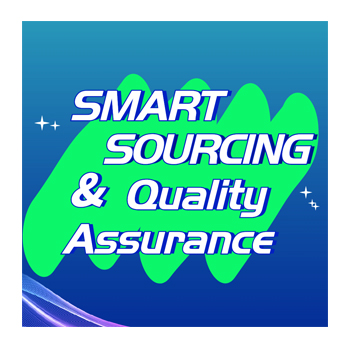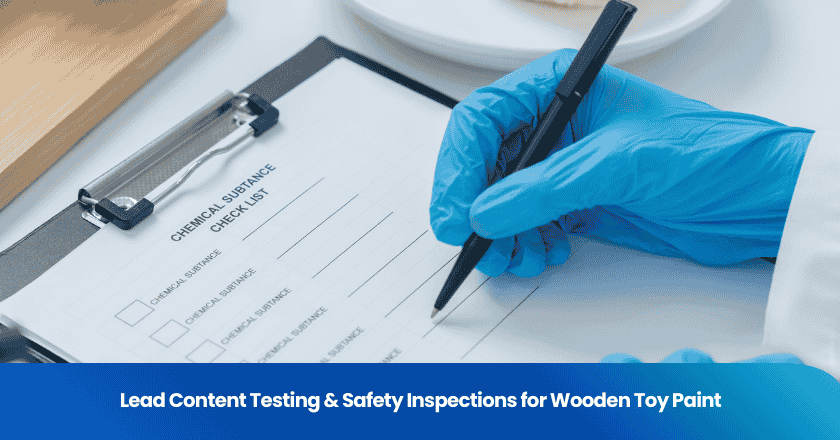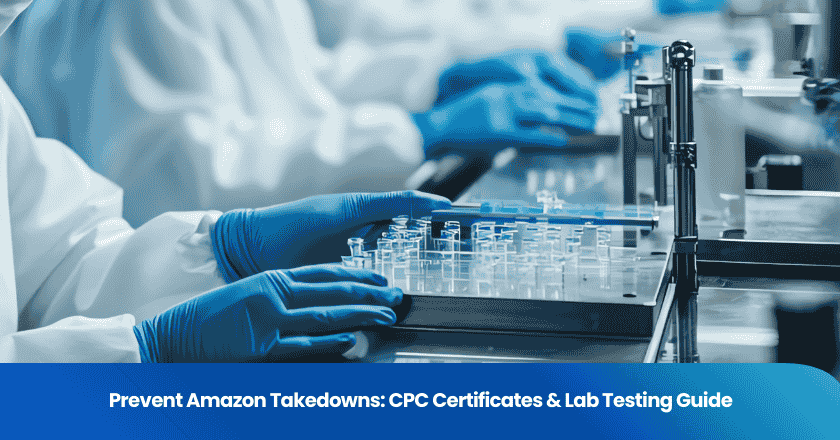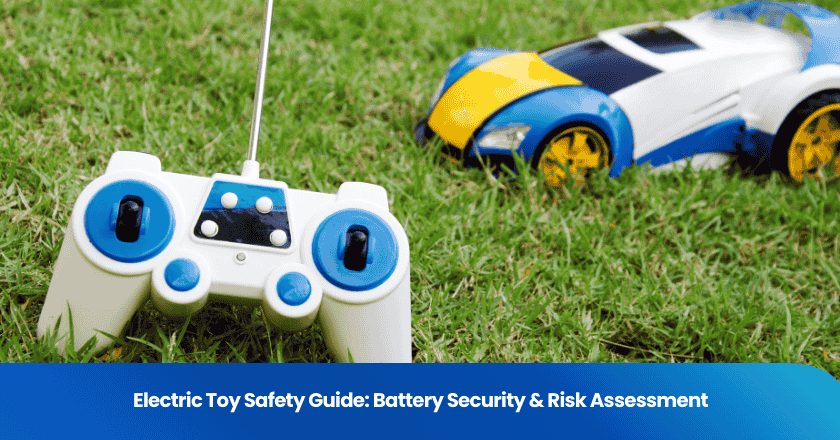
Imagine you receive a shipment of toys from a new supplier in China, only to find defects and safety issues. You know that one mistake can harm your reputation and cost you money. You need a reliable way to avoid these risks. Understanding the importance of quality control helps you protect your business. When you choose a china toy quality control supplier, you gain confidence in every shipment. With the right steps, you reduce costly surprises and ensure safe, high-quality products.
Key Takeaways
• Set clear goals before auditing to focus on quality, safety, and compliance.
• Research your supplier’s background and review all important documents carefully.
• Inspect the factory’s operations, management, cleanliness, machinery, and production capacity.
• Check certifications, quality control teams, and social and environmental compliance.
• Use product specs, sample reviews, lab testing, and third-party inspections to ensure safety and quality.
Audit Planning
Audit Objectives
You need clear goals before you start any audit. Define what you want to achieve with your supplier audit. Common objectives include checking product quality, ensuring safety standards, and verifying compliance with regulations. You might also want to confirm the supplier’s ability to meet your order volume and deadlines. Setting these objectives helps you stay focused during the audit process. Write down your goals and share them with your team. This step ensures everyone understands the purpose of the supplier audit.
Supplier Background
Gather information about your supplier before you visit the factory. Start by researching the company’s history, ownership, and reputation. Look for details about their experience in the toy industry. You can check online reviews, business directories, and industry reports. Ask the supplier for their company profile and organization chart. This background check helps you spot potential risks early. It also prepares you to ask the right questions during the audit.
Tip: A thorough background check can reveal red flags before you invest time and money.
Documentation Review
Collect and review all necessary documents before the on-site audit. Request copies of business licenses, certifications, and registration papers. Check if the supplier has valid export licenses and compliance certificates. Review their organization structure and quality management documents. Use a supplier audit checklist to make sure you do not miss any important paperwork. This step helps you verify the supplier’s legitimacy and readiness for business.
A well-prepared audit plan gives you confidence. You know what to look for and how to evaluate each area. Careful planning reduces surprises and helps you make informed decisions.
Supplier Assessment
Factory Audit
You begin your supplier assessment with a thorough factory audit. This step gives you a direct look at the supplier’s operations. Walk through the facility and observe each area. Check the production lines, storage rooms, and loading docks. Take notes on the workflow and organization. You want to see if the factory follows your requirements and industry standards. Review the audit checklist you prepared earlier. This helps you stay focused and ensures you do not miss any critical points.
Tip: Bring a camera or smartphone to document your observations during the factory audit. Photos help you remember details and support your final audit report.
Management Structure
Next, examine the management structure. Ask for an organization chart and meet key managers. You want to know who oversees production, quality control, and logistics. Strong leadership often leads to better results. Interview managers about their roles and responsibilities. Ask how they handle problems and communicate with workers. A clear management structure supports smooth operations and quick decision-making.
• Request a list of department heads.
• Ask about staff training and experience.
• Check if managers understand your quality control expectations.
Housekeeping & Cleanliness
Cleanliness in a toy factory is not just about appearance. It affects product safety and quality control. Walk through the facility and look for signs of good housekeeping. Floors should be clean and free of debris. Workstations must stay organized. Proper storage of materials prevents contamination. You want to see regular cleaning schedules and clear responsibilities for housekeeping tasks.
Note: Poor housekeeping can signal deeper issues with discipline and process control.
Machinery & Maintenance
Machinery plays a key role in toy manufacturing. Inspect the equipment used in production. Well-maintained machines produce consistent results and reduce defects. Ask to see maintenance records and service logs. Review the standard operating procedures (SOPs) for machine operation and repair. You want to confirm that the supplier follows a regular maintenance schedule. This step helps you avoid delays and quality problems caused by equipment failure.
| Machinery Checklist | What to Look For |
|---|---|
| Maintenance Records | Up-to-date and complete |
| SOPs for Operation | Clear and accessible |
| Spare Parts Availability | Sufficient stock on-site |
| Safety Features | Proper guards and emergency stops |
Production Capacity
Assess the supplier’s production capacity to ensure they can meet your order requirements. Ask about daily and monthly output. Review production schedules and past order records. You want to see if the factory can handle your volume without sacrificing quality control. Check if they have enough staff and resources for large orders. If possible, observe a live production run. This gives you a real sense of their capabilities.
• Request production data for the last six months.
• Compare capacity claims with actual output.
• Ask about plans for scaling up if needed.
A detailed supplier assessment gives you confidence in your sourcing decisions. You identify strengths and weaknesses before you commit. This process, combined with manufacturing inspections and regular audits, forms the backbone of effective quality control.
Quality Control Systems
Certifications
Certifications play a major role in toy manufacturing. You should always check if your supplier holds recognized certifications. The most common ones include ISO 9001 for quality management, BSCI for social responsibility, and SA8000 for workplace standards. These certificates show that the factory follows strict guidelines. You can ask to see the original documents and verify them with the issuing organizations.
| Certification | What It Proves | Why It Matters |
|---|---|---|
| ISO 9001 | Quality management system | Consistent product quality |
| BSCI | Social responsibility | Ethical labor practices |
| SA8000 | Workplace standards | Safe and fair working conditions |
Tip: Always confirm that certifications are current and cover the full scope of your products.
Quality Team
A strong quality team forms the backbone of any reliable supplier. You should meet the team members responsible for quality control. Ask about their training, experience, and daily tasks. A dedicated team will monitor every stage of production. They will check raw materials, supervise assembly, and inspect finished toys. You can request to see their inspection records and reports. This step helps you understand how the supplier manages quality control on the factory floor.
• Ask how many people work in the quality team.
• Find out if they receive regular training.
• Review their process for handling defects.
A skilled quality team reduces the risk of mistakes and ensures your standards are met.
SOPs & Internal Audits
Standard Operating Procedures (SOPs) guide every step in the production process. You should review these documents during your audit. SOPs show how workers perform tasks, handle materials, and check for defects. Well-written SOPs help maintain consistent quality control. You can also ask about internal audits. These are regular checks the factory does to find and fix problems before they reach you. Internal audits show that the supplier takes quality control seriously and works to improve over time.
• Request copies of SOPs for key processes.
• Ask how often the factory conducts internal audits.
• Review audit results and follow-up actions.
Note: Factories with strong SOPs and regular audits usually deliver better results.
Social & Environmental Compliance
Toy buyers must consider more than just product quality. You should also check if your supplier meets social and environmental standards. Social compliance means the factory treats workers fairly and follows local labor laws. Environmental compliance means the factory manages waste, uses safe materials, and reduces pollution. You can look for evidence such as clean work areas, proper waste disposal, and safety equipment. Many buyers now require proof of social and environmental responsibility as part of their quality control process.
• Ask about worker safety programs.
• Check for environmental management certificates.
• Review policies on waste and chemical handling.
Social and environmental compliance protects your brand and supports long-term business success.
By focusing on certifications, a skilled quality team, clear SOPs, and strong compliance, you build a solid foundation for quality control. These systems help you avoid costly mistakes and deliver safe, reliable toys to your customers.
Product Specs & Samples
Product Specs
You need to provide clear and detailed product specifications before you start production. These specs should include materials, dimensions, colors, packaging, and safety requirements. When you give your supplier a complete list, you reduce the risk of misunderstandings. You can use a checklist to make sure you cover every detail. This step helps you set clear expectations and makes the inspection process much easier later.
• List all required materials and finishes.
• Specify safety standards for your target market.
• Include packaging and labeling instructions.
A detailed product spec sheet acts as your reference during every inspection.
Sample Review
Always ask your supplier for samples before mass production. You should examine these samples closely. Check if they match your product specs. Look for quality, safety, and appearance. If you find any issues, discuss them with your supplier right away. Reviewing samples helps you catch problems early. You can also use these samples as a benchmark during the inspection of finished goods.
| Sample Review Checklist | Why It Matters |
|---|---|
| Material quality | Ensures durability |
| Color and finish | Matches your standards |
| Safety features | Meets regulations |
Communication
Good communication with your supplier is key to a successful project. You should share your inspection plans and checklists before production starts. This helps your supplier understand your requirements. Regular updates keep everyone on the same page. If you have changes, communicate them clearly and confirm your supplier understands. Open communication reduces mistakes and supports a smooth inspection process.
Tip: Use photos, drawings, or videos to explain your requirements. Visual aids help avoid confusion.
Product Inspections in China
Pre-Production Inspection
You should always start with a pre-production inspection. This step checks raw materials and components before the factory begins making your toys. You want to confirm that the supplier uses the correct materials and follows your product specifications. A pre-production inspection helps you catch problems early. If you find issues now, you can fix them before they affect the whole order. This step forms the first line of defense in your quality inspection process.
Tip: Ask for samples of raw materials during this inspection. Compare them to your approved samples.
In-Process Inspection
During production, you need to carry out an in-process inspection. This inspection checks the assembly process and looks for defects as the toys move down the line. You can spot mistakes before they become bigger problems. In-process inspections help you keep quality on track and reduce waste. You should review the production flow, worker skills, and machine settings. This step ensures your supplier follows your requirements at every stage.
• Check for consistent assembly.
• Review quality inspection records.
• Observe how workers handle materials.
Final Inspection
A final inspection takes place when the order is complete. You or your agent should check finished toys for defects, safety, and packaging. This inspection confirms that the products meet your standards before shipping. You can use a checklist to review appearance, function, and labeling. Final inspections help you avoid surprises when the shipment arrives.
| Final Inspection Checklist | Why It Matters |
|---|---|
| Product appearance | Matches your specs |
| Safety features | Meets regulations |
| Packaging | Protects the product |
Issue Resolution
If you find problems during any inspection, you need a clear plan for issue resolution. Communicate with your supplier right away. Describe the problem and ask for corrective action. You should document every step and follow up to make sure the supplier fixes the issue. Effective issue resolution keeps your supply chain strong and protects your reputation.
Note: Quick action on quality inspection findings can save time and money.
Product inspections in china give you control over your supply chain. By following these steps, you improve your quality inspection process and reduce risks.
Lab Testing & Compliance
Lab Testing
You need to make sure your toys meet strict safety and quality requirements. Lab testing in china gives you a way to check if your products follow the rules. You can send samples to certified labs for analysis. These labs test for harmful chemicals, sharp edges, and small parts that could be dangerous. Lab testing in china also checks for heavy metals like lead and cadmium. You get a detailed report that shows if your toys pass or fail. This step helps you avoid recalls and protects your customers.
Tip: Always choose labs with international accreditation for reliable results.
Safety Standards
You must know which safety standards apply to your toys. Different countries have different rules. For example, the United States uses ASTM F963, while Europe uses EN71. Lab testing in china helps you confirm that your products meet these standards. You should review the test methods and limits for each market. Make sure your supplier understands these requirements. If you plan to sell in several countries, ask for tests that cover all needed standards.
| Region | Standard | Main Focus |
|---|---|---|
| United States | ASTM F963 | Mechanical, chemical, labeling |
| Europe | EN71 | Physical, flammability, chemicals |
| Other Markets | Varies | Check local regulations |
Compliance Docs
You need to collect and organize all compliance documents before shipping. These include lab test reports, safety certificates, and declarations of conformity. Lab testing in china provides you with official paperwork that proves your toys are safe. Keep digital and paper copies for your records. Customs officials may ask for these documents during import. If you cannot provide them, your shipment could face delays or rejection.
Note: Store compliance documents for several years in case of audits or customer questions.
Quality Control Services in China
Third-Party Inspectors
You can use third-party inspectors to strengthen your quality control process. These professionals work independently from your supplier. They visit factories and carry out quality inspection tasks on your behalf. Third-party inspectors follow strict guidelines and use detailed checklists. They help you spot problems early and give you unbiased reports. Many importers rely on these experts for quality control services in china because they provide an extra layer of protection.
Tip: Third-party inspectors often have experience with international safety standards. They know what to look for during each inspection.
Inspector Selection
Choosing the right inspector is a key part of quality control. You should look for inspectors with experience in the toy industry. Ask about their training and knowledge of quality inspection methods. Check if they understand the specific requirements for your products. You can request sample reports to see how they document their findings. Good inspectors communicate clearly and answer your questions. They should also follow your quality control checklist closely.
Here are some points to consider when selecting an inspector:
• Experience with toys and children’s products
• Familiarity with your target market’s regulations
• Ability to provide detailed and timely reports
Inspection Coordination
You need to coordinate each inspection carefully. Start by sharing your product specifications and quality control requirements with the inspector. Set clear dates for each inspection, such as pre-production, in-process, and final checks. Make sure the factory knows when the inspection will happen. Good coordination helps avoid delays and confusion. You should review the inspection plan together and confirm all details in writing.
| Step | What You Should Do |
|---|---|
| Share requirements | Send specs and checklists |
| Schedule inspection | Set dates with factory and inspector |
| Review plan | Confirm all steps in writing |
Quality control services in china give you more control over your supply chain. By using third-party inspectors and managing each inspection well, you improve your quality control and reduce risks.
Post-Audit Actions
Report Review
After you complete the audit, you need to review the findings carefully. Start by reading the audit report in detail. Look for any issues or gaps that the audit uncovered. Pay attention to both major and minor problems. You should compare the audit results with your original objectives. This helps you see if the supplier meets your requirements. Make notes on areas that need improvement. Share the audit report with your team and discuss the next steps.
Tip: Use a checklist to track which audit points passed and which need attention.
Corrective Actions
You must address any problems found during the audit. Work with your supplier to create a corrective action plan. List each issue and describe the steps needed to fix it. Set clear deadlines for each action. Assign responsibility to specific people at the factory. Follow up to make sure the supplier completes each task. Document all changes and keep records for future reference.
Sample Corrective Action Table:
| Issue Found | Action Needed | Responsible Person | Deadline |
|---|---|---|---|
| Missing safety label | Update packaging | QC Manager | 2 weeks |
| Dirty workstations | Deep cleaning | Production Lead | 1 week |
Ongoing Monitoring
Continuous improvement is key to long-term success. You should not stop after one audit. Schedule regular follow-up audits to check progress. Monitor the supplier’s performance over time. Keep communication open with your supplier. Give feedback and ask for updates on corrective actions. This ongoing process helps you catch new issues early and maintain high standards.
Note: Regular audits and follow-ups show your commitment to quality and help build trust with your supplier.
Supplier Audits in China: Best Practices
Audit Checklist
You need a clear checklist for every supplier audit. This tool helps you stay organized and ensures you cover all important areas. A good checklist for supplier audits in china includes company background, business licenses, production capacity, quality control systems, and social compliance. You should also add sections for product specifications and sample reviews. When you use a checklist, you make your audit more efficient and reduce the risk of missing key points.
Sample Audit Checklist Table:
| Area | What to Check |
|---|---|
| Company Profile | Registration, ownership |
| Licenses & Certificates | Validity, scope |
| Production Process | Capacity, workflow |
| Quality Control | SOPs, team, records |
| Social Compliance | Worker safety, environment |
Tip: Update your checklist before each supplier audit to match your current needs.
Red Flags
You must watch for warning signs during supplier audits in china. Red flags can signal deeper problems that may affect your business. Some common red flags include incomplete documentation, expired certificates, poor housekeeping, and unclear management roles. You should also look for high staff turnover or inconsistent production records. If you spot these issues, you need to investigate further before making decisions.
• Missing or outdated business licenses
• Dirty or disorganized factory areas
• Lack of clear quality control procedures
• Unwillingness to share information
Note: Address red flags quickly to avoid bigger problems later.
Communication Tips
Strong communication leads to best-in-class audits. You should set clear expectations with your supplier before the audit begins. Share your checklist and schedule in advance. During supplier audits in china, ask direct questions and listen carefully to answers. Use simple language and visual aids when needed. After the audit, provide feedback and follow up on any issues. Good communication builds trust and helps you get better results from every supplier audit.
Open and honest dialogue supports long-term success.
China Toy Quality Control Supplier: Key Takeaways
Summary
You have learned how to audit toy suppliers in China step by step. A strong audit process helps you avoid costly mistakes and ensures product safety. When you work with a china toy quality control supplier, you gain access to expertise in factory audits, product inspections, and compliance checks. You can trust that your toys meet international standards. A reliable china toy quality control supplier supports you with clear communication and detailed reports. You reduce risks and improve your supply chain when you follow these best practices.
Remember: Careful planning and regular audits protect your business and your customers.
Here is a quick recap of what you should focus on:
• Set clear audit objectives.
• Review supplier background and documents.
• Assess factory operations and management.
• Check quality control systems and certifications.
• Inspect product specs and samples.
• Use lab testing for compliance.
• Work with a china toy quality control supplier for third-party inspections.
Next Steps
You can take action now to improve your sourcing process. Start by creating a custom audit checklist based on your needs. Contact a china toy quality control supplier to discuss your requirements. Schedule your first audit and review the results with your team. Use feedback to drive continuous improvement. Stay proactive by planning regular follow-up audits. When you partner with a trusted china toy quality control supplier, you build a safer and more reliable supply chain.
| Action Item | Benefit |
|---|---|
| Create audit checklist | Covers all key areas |
| Schedule supplier audit | Identifies risks early |
| Review audit findings | Guides corrective actions |
| Partner with experts | Ensures compliance and quality |
Tip: Consistent quality control leads to long-term business success.
You now have a clear roadmap for auditing toy suppliers in China. By following each step, you reduce risks and improve product quality. Start by building your own audit checklist or reach out to industry experts for guidance. Regular audits help you catch problems early and keep your supply chain strong.
Proactive quality control protects your business and builds trust with your customers. Take action today for safer, better toys.
FAQ
What documents should you request from a toy supplier in China?
You should ask for business licenses, export certificates, quality management documents, and compliance certificates. These documents help you verify the supplier’s legitimacy and ability to meet your requirements.
How often should you audit your toy supplier?
You should audit your supplier at least once a year. If you notice quality issues or changes in production, increase the frequency. Regular audits help you maintain high standards and catch problems early.
Why is lab testing important for toys?
Lab testing checks for harmful chemicals, sharp edges, and small parts. You need lab tests to ensure your toys meet safety standards and avoid recalls. Always use accredited labs for reliable results.
What are common red flags during a supplier audit?
Watch for missing documents, expired certificates, poor housekeeping, and unclear management roles. High staff turnover or inconsistent production records also signal risk. Investigate these issues before making decisions.

Smart Sourcing & Quality Assurance Content Team
Article by Smart Sourcing & Quality Assurance Content Team
The Smart Sourcing & Quality Assurance Content Team is dedicated to delivering high-quality, easy-to-understand information that empowers our audience to navigate the complexities of global sourcing and quality assurance. Our team of writers has extensive experience in creating content across various fields, including procurement, supply chain management, quality assurance, market trends, and industry best practices. We specialize in sectors such as apparel, textiles, and consumer goods, providing targeted insights to help businesses in these industries optimize their sourcing strategies, ensure product quality, and maintain a competitive edge in the market.
Grow your business with TradeAider Service
Click the button below to directly enter the TradeAider Service System. The simple steps from booking and payment to receiving reports are easy to operate.



